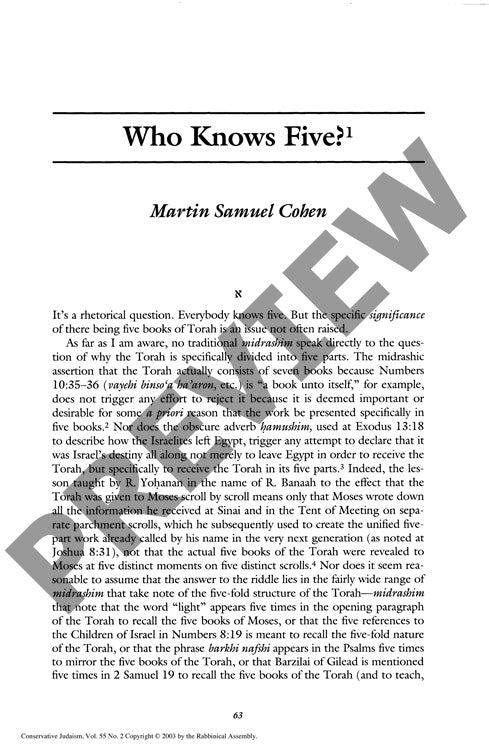Who Knows Five
Couldn't load pickup availability
The pervasive use of five-part structures throughout the Hebrew Bible has long puzzled scholars, who find traditional explanations for this pattern remarkably absent from ancient sources. From the Torah to Psalms, Proverbs, Job, and Daniel, virtually every biblical text either contains five sections or belongs to a larger quinquepartite arrangement. Through comparative literary analysis of biblical texts and midrashic literature, this research uncovers a sophisticated symbolic system wherein the number five likely signified divine authorship and prophetic authenticity. The pattern appears linked to the Hebrew letter *heh* (numerical value five) in the divine name and the biblical metaphor of God's five-fingered hand in prophetic experience. Particularly striking is the structural parallelism between Torah and Psalms, both presented as prophetic works suffused with divine presence. Rather than serving merely practical purposes, these five-part divisions emerge as deliberate literary devices employed by ancient redactors to encode theological meaning into the very architecture of sacred texts, creating an internal reference system that points to God's communicative presence.

More Information
-
Physical Description
-
Publication Information
Published 2003
ISBN
-
Publication Credits
Martin Cohen

